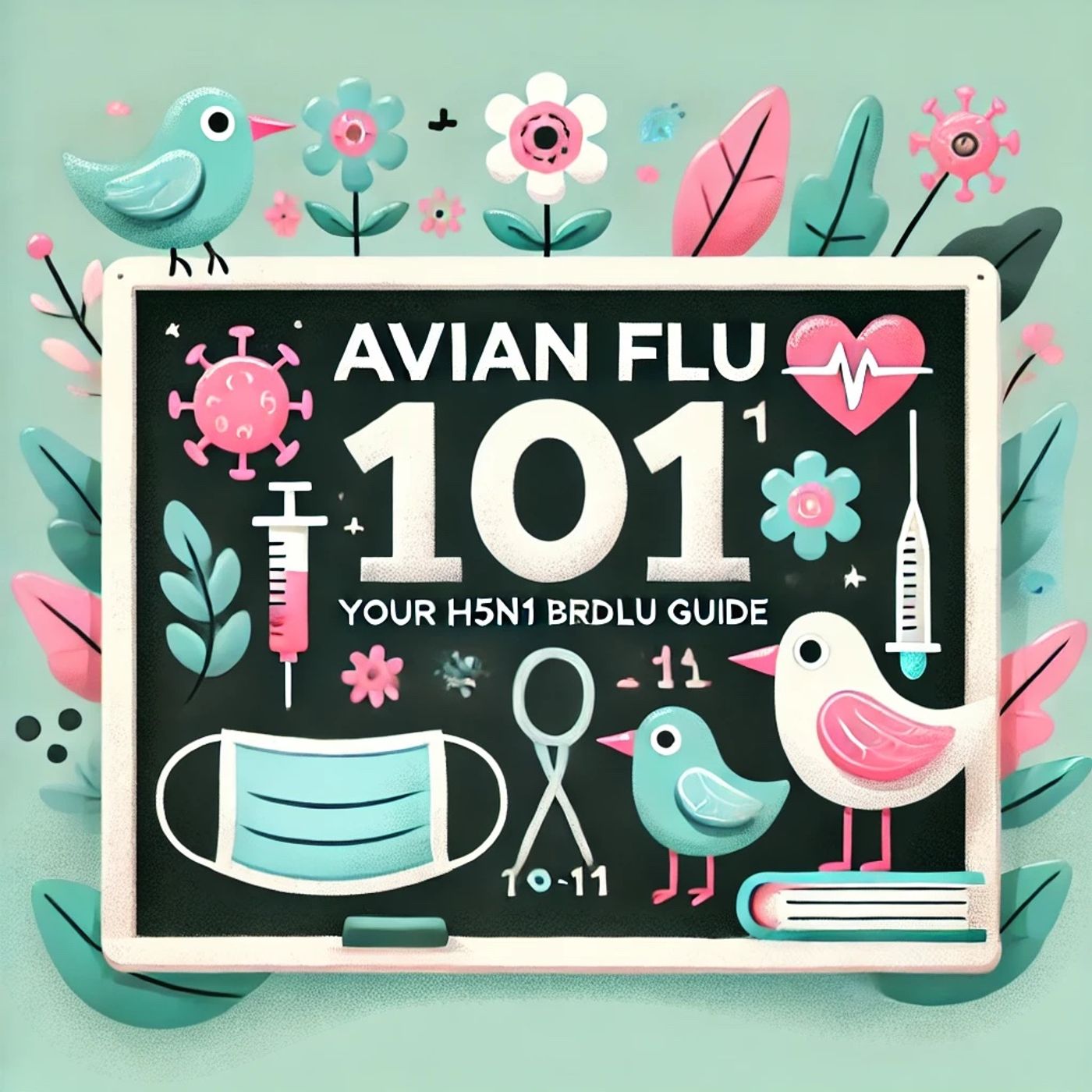Listen "H5N1 Bird Flu Explained: What You Need to Know About Transmission, Risks, and Prevention in 2025"
Episode Synopsis
Welcome to Quiet Please. Today’s episode is Avian Flu 101: Your H5N1 Bird Flu Guide.Let’s start with some basics. H5N1, better known as bird flu, is a type of avian influenza virus. According to the National Academies, it mainly infects birds but can occasionally jump to humans and other animals through close contact with infected birds, contaminated environments, or, more recently, dairy cattle. In birds, H5N1 is extremely deadly, wiping out entire flocks within days, as noted by the Migrant Clinician Network.So, what exactly is a virus? In simple terms, a virus is like a tiny package of genetic instructions surrounded by a protective coat. It can’t live or reproduce by itself. Instead, it invades living cells—think of it as a computer virus hijacking a device—and uses the cell’s machinery to make copies of itself. For H5N1, this means attaching to cells using special proteins, letting it enter and multiply, often leading to illness.You may hear terms like avian influenza, H5N1 and highly pathogenic avian influenza. 'Avian' means related to birds. 'Influenza' is a group of viruses causing the flu. The letter and number codes, like H5N1, refer to the two main surface proteins: hemagglutinin (H) and neuraminidase (N), which act like keys letting the virus enter and exit cells, explained in a 2025 review from the National Library of Medicine.How does transmission actually happen? Imagine glitter on your hands after you pet a bird with the flu, and now everything you touch gets a bit of sparkle. The H5N1 virus hides in saliva, droppings, or secretions from sick birds, contaminating surfaces, tools, and even dust. If you then touch your face or inhale those tiny viral particles, you can become infected. Human cases are extremely rare and mostly tied to people working closely with infected poultry, or more recently, dairy herds. The general public’s risk remains low, as noted by CDC reports.Let’s place H5N1 in context. Bird flu outbreaks in birds date back to the late 1990s in Asia, when it first jumped to humans. Since then, each major outbreak taught us more about rapid response: culling infected animals, improving biosecurity on farms, and increased surveillance. Despite over two decades of concern, strict measures have mostly kept human cases limited—worldwide, several hundred confirmed human cases have occurred, often with serious outcomes.Is H5N1 anything like the seasonal flu or COVID-19? There are similarities and key differences. Like regular flu and COVID-19, H5N1 causes fever, cough, and sometimes breathing problems. However, H5N1 tends to cause much more severe illness in people who do get infected, with a fatality rate of about 40 to 50 percent, compared to less than 1 percent for seasonal flu. Unlike COVID-19, which spreads easily person-to-person, H5N1 does not transmit efficiently from human to human. Compared to both seasonal flu and COVID-19, H5N1 in humans is far rarer but far more severe.Let’s wrap up with some quick Q&A.Is the general public at risk? Current evidence from health agencies like the CDC and WHO suggests risk to the public is very low. Most infections have involved close, prolonged contact with sick poultry or contaminated environments.How can I protect myself? Avoid contact with sick or dead birds, and don’t consume raw or unpasteurized animal products. If you work with poultry or dairy cattle, use protective equipment and follow biosecurity protocols.Could bird flu be the next COVID-19? Experts from Novant Health and the CDC believe it’s unlikely based on current transmission patterns, but they continue to monitor changes, as the virus is constantly evolving.Thanks for tuning in to Avian Flu 101. Please come back next week for more—and remember, this has been a Quiet Please production. For more, visit QuietPlease Dot A I.For more http://www.quietplease.aiGet the best deals https://amzn.to/3ODvOtaThis content was created in partnership and with the help of Artificial Intelligence AI
More episodes of the podcast Avian Flu 101: Your H5N1 Bird Flu Guide
H5N1 Bird Flu Guide: What You Need to Know About Avian Influenza Symptoms, Transmission, and Safety
14/11/2025
H5N1 Bird Flu Explained: What You Need to Know About Transmission, Symptoms, and Current Risk Levels
12/11/2025
H5N1 Bird Flu Explained: What You Need to Know About Avian Influenza and Human Health Risks
10/11/2025
H5N1 Bird Flu Explained: What You Need to Know About Avian Influenza and Human Risk in 2024
08/11/2025
H5N1 Bird Flu Explained: What You Need to Know About Transmission, Risks, and Prevention in 2024
03/11/2025
 ZARZA We are Zarza, the prestigious firm behind major projects in information technology.
ZARZA We are Zarza, the prestigious firm behind major projects in information technology.
